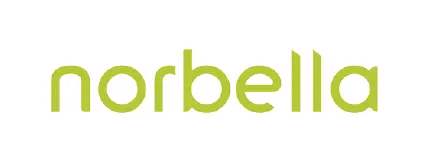![[VIDEO] Jeff Talks Tech: Private Data Centers vs. Public Cloud Infrastructure](https://www.icorps.com/hs-fs/hubfs/New%20Upright%20Hublox%20webp.webp?width=1200&height=675&name=New%20Upright%20Hublox%20webp.webp)
Jeff Talks Tech: Private Data Centers vs. Public Cloud Infrastructure
Private Data Centers Vs. Public Cloud Infrastructure
[Jeff Lauria] Jeff Lauria, Vice President of Technology here at iCorps Technologies. Today, I'd like to talk about private data centers' hosted solutions versus public cloud infrastructure.
A lot of organizations, over the years, have taken their infrastructure and put them into private data centers, either at data centers that they control, or data centers that are hosted.
What that basically means is that the servers and the compute power that you would typically have in your office has been shifted to a third party vendor. The third-party vendor is responsible for maintaining backups. For example: server infrastructure, support. But what we've noticed over the years, over the past few years, is that these vendors have not been scaling appropriately. As a matter of fact, as the public cloud infrastructure has taken hold, has matured, these vendors offerings have decreased, along with support and performance.
A lot of clients we speak to here at iCorps are concerned about how they get from their private data center to another solution. Typically, a public cloud solution offered by either Microsoft, and the Azure platform, or any other public cloud provider, and why they should move. We typically hear the same three or four things:
"My current hosting provider can't support me."
"They take too long to get back to me."
"I'm having performance-related issues."
"Its system seems slow."
"The system is down."
So we hear these constantly. For those folks, our recommendation is really to take a look at the public cloud. Take a look into Azure, for example. Azure is a very dynamic platform. It can scale up and scale down as needed. Automatically in some cases. Microsoft 365 as well is a very dynamic secure platform for your messaging system. You pay for what you use. As employees increase, you buy more licensing. As they decrease, you offset some of that licensing.
Now the challenge here is, everyone is concerned about: "I feel trapped, I can't get out of this data center, my business is there, it's going to be painful, it's going to be disruptive." In most cases, it's not at all. In most cases, it can be very transparent to your user community. Moving email is a matter of just moving it from one place to another. File servers literally moving it from one provider to another. Same thing with Sequel and so forth.
There are really three ways to move data from one place to another. We can do a lift and shift model. However, be aware that in most cases with hosting providers, you don't own the software licensing. So you will need to buy new licensing. In that case, we migrate the data. That is the second option, to migrate from one place to another. Third option available to you is to split or come up with a hybrid system where we're migrating some data to one provider, and we're migrating another data or other sets of data to another provider.
A perfect example is email. Microsoft Exchange will be migrated to Microsoft 365 while your file service, Sequel server, and other applications are migrated to Azure. The benefits here are numerous. Increased security level. A lot of hosting providers are limited in the services in which they can offer. Multi-factor authentication. Key in today's environment is to use multi-factor authentication. Conditional access, meaning I will grant access if you meet these conditions. UTM firewalls.
But the most important thing here is that you are in control of your digital assets. In the hosting scenario, you don't own the equipment,
you don't own the licensing, you only own the data. Getting your data back can be very, very difficult. In a public cloud infrastructure, specifically how iCorps' model works, is the client or the tenant in which you sit is yours. Just think of it as this: it's your car, we're the drivers. Now you have 100% control of that tenant. We manage it for you, on your behalf, but it's yours.
So, now you have 100% control of your digital assets unlike the other model. For more information, please reach us here at iCorps Technologies. Look forward to speaking to you again.
Learn How iCorps Has Helped Clients Optimize Their Cloud Infrastructure:





